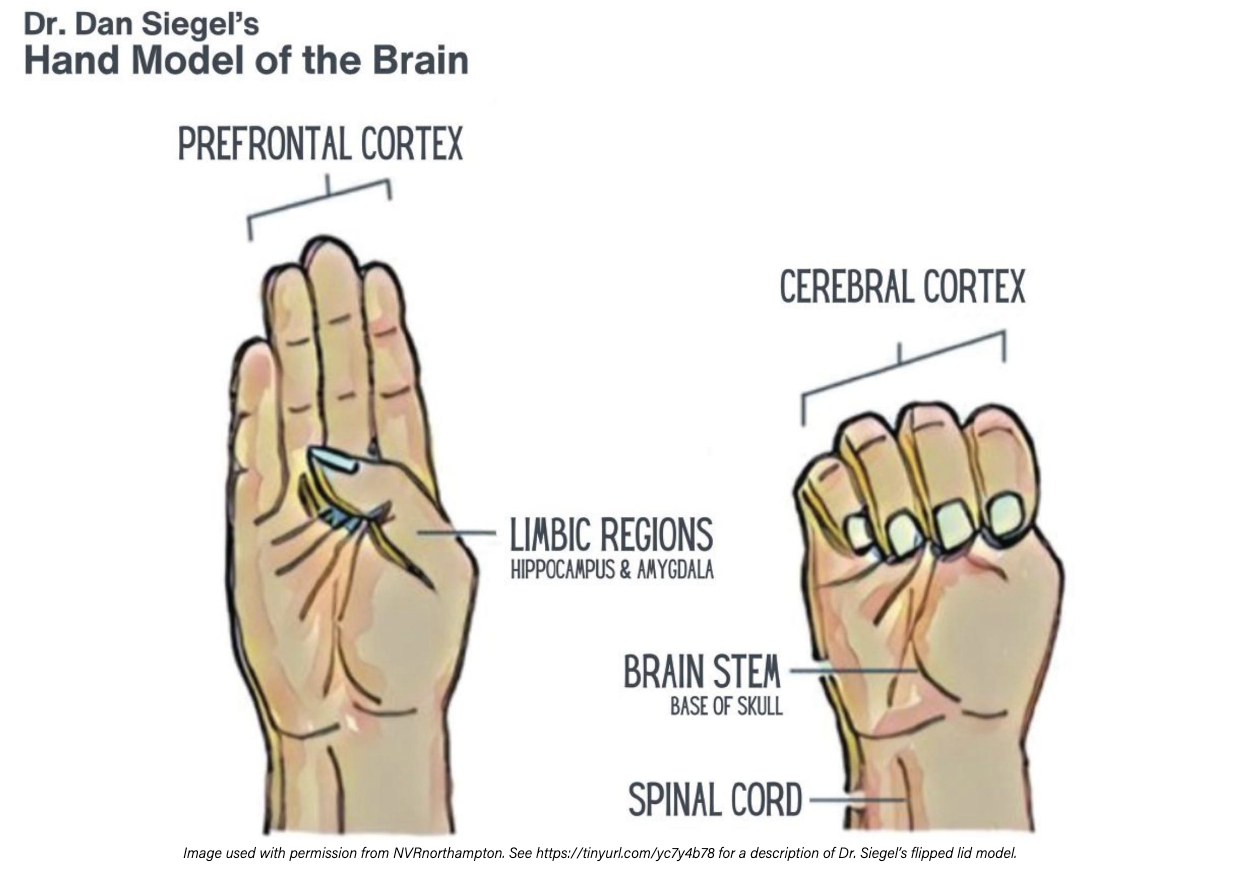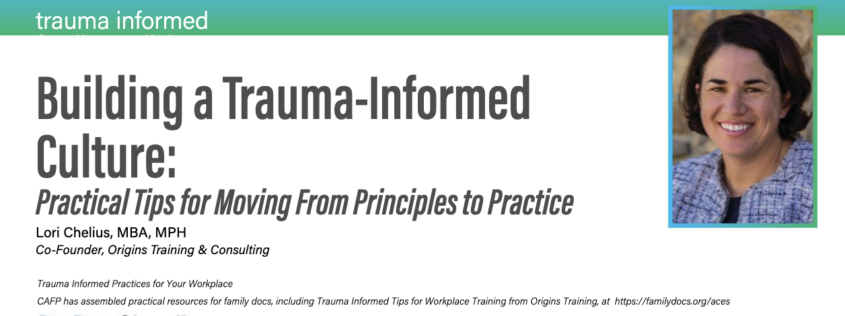By: Lori Chelius, MBA, MPH (originally published in California Family Physician Magazine Fall 2024)
As healthcare professionals, you all came to this work to support healing. It’s hard work, and sometimes the reason you started this work – your why – can get pushed aside. Overloaded schedules, frustrated patients, and strained resources can all contribute to stress and burnout. Within that context, trauma-informed care (TIC) can sometimes seem like one more thing to do. But what if TIC is less about one more thing to do and more about HOW we are doing
WHAT we are already doing? And how can TIC help us reconnect with that purpose?
TIC is a strengths-based approach to building an organizational culture that recognizes how stress affects people, promotes tools and practices to increase resilience, and encourages opportunities for safety and connection. But culture can sometimes feel daunting and nebulous so let’s take a look at this in practice. We hope you are inspired by how TIC has been brought to life.
Erika Roshanravan, MD FAAFP, is a family physician and the Medical Director at Davis Community Clinic at CommuniCare+OLE, a federally qualified health center (FQHC) in Northern California. She is also a champion of TIC within her clinic and within CAFP.
Establishing a Shared Language
Davis Community Clinic has initiated team-building activities during staff meetings, incorporating the “flipped lid” hand model developed by Dr. Dan Siegel. Activities encourage staff to recognize signs of stress, identity coping strategies, and offer support to one another. Establishing this shared language fosters communication during times of stress, promoting a culture of connection among teammates.

Assuming Best Intent
Another example involves adopting a mindset of assuming best intent, especially in stressful situations where conflicts may arise, whether with patients or among staff.
This approach embodies a key principle of trauma-informed care: shifting from asking “What’s wrong with you?” to “What happened to you?” This shift creates room for a healing-centered approach, fostering understanding and empathy.
Bringing the Team Together for “Cuddles”
A third example, still in the process of being implemented, involves introducing team huddles (they’ve coined them “cuddles”) at the close of clinic hours, complementing morning “huddles that prepare for the day ahead. Coined to highlight their nurturing nature, these cuddles offer a supportive space where providers and staff can tie up loose ends for patients, share feedback on clinic processes and debrief with fellow team members. Additionally, bi-weekly team meetings are held to enhance coordination and discuss improvements. These initiatives underscore the importance of staff empowerment, emphasizing that each team member’s input is valued-one of the key principles of a trauma-informed approach.
At the core of this approach is identifying concrete ways to operationalize the trauma-informed principles of safety, trustworthiness and transparency, peer support and mutual self-help, collaboration and mutuality, empowerment, voice, and choice, strengths-based, and cultural, historical, and gender humility. While these concepts may appear straightforward, implementing them can be challenging. However, their impact on patient care and staff well-being is profound and transformative.
Says Dr. Roshanravan, “This is a culture change, not a specific thing we do.” And while culture change can take time, there are simple and concrete practices that can be sprinkled in right away to support that culture of safety and connection.
CommuniCare+OLE’s approach highlights that while TIC supports patient care, the approach starts internally. By incorporating TIC practices within their organization, they have observed improvements in staff wellbeing and resilience, which in turn positively impacts patient care. As echoed by a team member at Eisner Health, an FQHC in Southern California, “When we take care of ourselves, that’s when we can provide the best care for others.”
To request training from Origins, email us.
To access the materials developed for CAFP go here.






